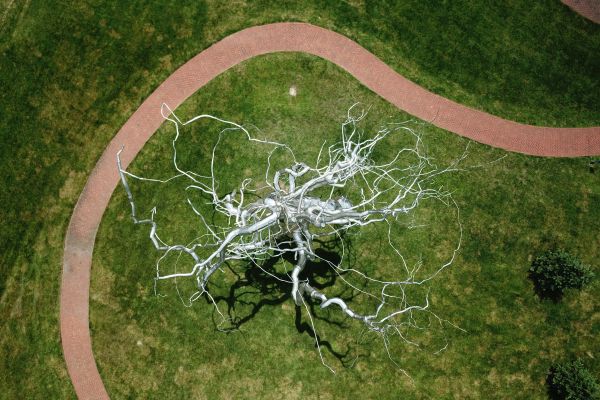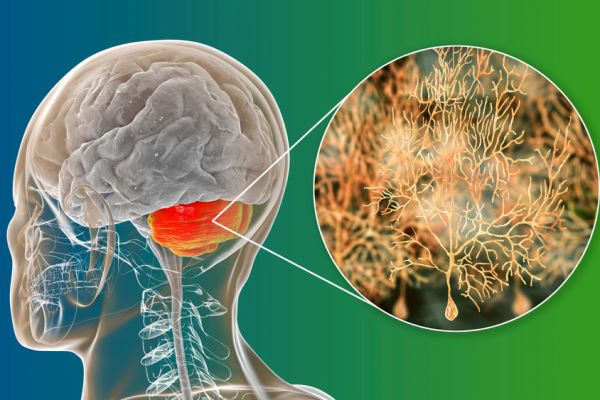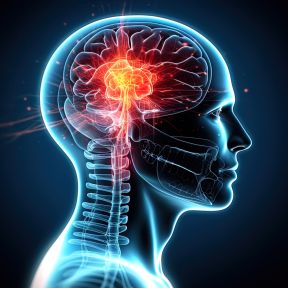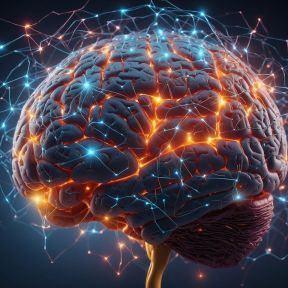Fields of Study in Neuroscience
Neuroscience is a vast field of study containing a range of narrower subfields. Each involves a spotlight on the brain and other parts of the nervous system, connecting them to one or more zones of psychology and behavior—from thought processes to social interactions to mental illness.
Given how enmeshed the different aspects of mental life are, there is plenty of overlap between the different domains of neuroscience. Different branches can blend and feed into one another: Scientific research on cognition or emotions can be of value to neuroscientists who study psychiatric disorders, for instance.
Commonly recognized categories such as the ones below offer a sense of the breadth and diversity of neuroscience as an endeavor. Among the other fields of neuroscience are neuroanatomy, cellular and molecular neuroscience, and neurogenetics (the study of the nervous system’s genetic basis). Neuroscientists in each field are typically researchers with a doctoral-level degree (such as a Ph.D. or MD).
On This Page
Cognitive neuroscience investigates the neural mechanisms that underlie thinking and perception. It explores how information processing, which includes learning, remembering, deciding, and problem-solving, is made possible by the brain.
The scope of cognitive neuroscience includes how thought processes unfold at the cellular level—in specific neurons and the connections between them—as well as in the links between mental processes and larger brain regions and systems.
Cognitive neuroscientists explore how the brain gives rise to mental processes and abilities. To do so, they analyze measures of cognition and aspects of individual brains—from structural variation and differences in the function of certain brain areas down to the activity of specific neurons (as they encode, for example, the location of an object in space). Such research provides insights into which parts of the brain, for example, are especially active when someone is engaged in a cognitive function such as remembering or reading.
Examples of topics in cognitive neuroscience include the formation of memories at the level of neurons, how different brain areas collaborate to produce language ability, and how the brain’s perception of the world can be biased by factors such as motivation. Cognitive neuroscientists also focus on areas such as attention, learning, decision-making, and consciousness.
Social neuroscience examines the brain in the context of its connections to other people and the broader social world. It recognizes that humans are a highly social species and that the complexity of social interaction could help explain the evolution of the highly developed human brain.
Research in social neuroscience explores how a physical system gives rise to the kinds of relational processes that have long been observed in social psychology. It also seeks to describe the ways in which the brain and body themselves are affected by aspects of social life, such as social isolation or integration.
Social neuroscientists study the relationships between the nervous system and various aspects of social cognition and behavior. These include mental processes such as identifying someone as a member of a social group and trying to understand someone else’s perspective. Researchers use measurements of biological activity (such as functional activation of particular brain areas) as well as measures of thinking and behavior to investigate the associations between them and how they influence each other.
Social neuroscience has highlighted the existence of instantaneous brain activity related to social categorization and prejudice; loneliness-related differences in how the brain represents the self and other people; and differences in the amygdalae of altruists and psychopaths. Other phenomena explored in social neuroscience include empathy, learning in social contexts, and group hierarchies.
Clinical neuroscience is an area of study that focuses on mental and nervous system disorders. These include disorders studied in psychiatry and clinical psychology, such as depression and anxiety disorders, as well as neurodegenerative conditions such as Alzheimer’s disease and multiple sclerosis. A major aim of neuroscientific research on clinical conditions is to contribute to improved methods of diagnosis, treatment, and prevention of disorder.
Researchers in clinical neuroscience analyze data on brain activation and other aspects of nervous system function and how they relate to various forms of mental illness or dysfunction. This may involve comparing patterns of brain activation in subjects who have clinical levels of dysfunction with those of healthy subjects. A clinical neuroscientist conducts scientific research but does not necessarily treat patients, whereas specialists in related clinical fields, such as neurology and neuropsychology, are involved in assessment and treatment.
Neuroscientific methods such as brain imaging have been applied to better understand various psychiatric, neurodevelopmental, and neurological conditions. Neuroscientists have observed, for instance, differences in how autistic children’s brains respond to incoming social information and in the activity of brain areas related to cognitive control in people with mood and anxiety disorders. Such findings could help inform theorizing about what causes symptoms in these conditions and how to target treatments.
Developmental neuroscience seeks to describe how the brain and nervous system form and change. The study of how age-related changes in the brain correspond with the development of individuals’ thinking and perception is called developmental cognitive neuroscience. Developmental neuroscientists explore both typical and atypical trajectories of nervous system development to better understand the bases of normal function and dysfunction.
Broadly speaking, developmental neuroscientists research how the anatomical form and functions of nervous systems develop within species, including both invertebrates and vertebrates. More specifically, developmental cognitive neuroscientists are interested in how cognitive processes that change as humans grow up—such as judgment and learning—correspond to aspects of the developing brain. They may, for example, present individuals of different ages, from young children to adults, with cognitive tasks and analyze how the results relate to differences in the activation of certain brain areas during the tasks.
Developmental neuroscientists have connected aspects of brain structure and function to various kinds of thinking and behavior over the lifespan. Neuroscientists have uncovered evidence that, for example, parts of the brain are more responsive to peer monitoring in adolescence than in adulthood; that less sleep in children is associated with lower volume in various brain areas; and that the brain’s structure at age 6 is predictive of brain function and reasoning years later.
Affective neuroscience explores how the brain produces emotions. It identifies how particular structures, chemicals, and networks in the brain relate to affective states such as anger, fear, pleasure, and desire and how they give rise to complex emotional experiences. Affective neuroscientists use findings from humans as well as non-human animals with analogous emotional responses to better understand the nature of these responses.
Affective neuroscience involves observing how the activation of certain areas and networks of structures in the brain (as well as differences in brain structure) correspond to various emotional states, which researchers may evoke in the lab. Based on their findings, affective neuroscientists not only identify what is happening in the brain when individuals have particular sorts of emotional experiences, but also theorize and debate about what an emotion actually is—whether, for instance, there are deeply rooted “basic emotion” categories or whether emotions are more complex and consciously constructed.
Emotional experiences of all shades, and how the brain produces them, are the territory of affective neuroscientists. They have explored how specific brain chemicals and structures help produce emotional responses—such as the neurotransmitter dopamine and desire or the amygdala and automatic responses to threats (and less directly, feelings of fear). They have also illustrated that different parts of the brain work together to produce any particular emotional state.
Behavioral neuroscience, also called biological psychology, is the study of how the brain and the rest of the nervous system provide the foundation for behavior. It examines the neural basis of capacities such as thinking and perception, learning, emotion, and motivation. As such, behavioral neuroscience overlaps with a number of contemporary fields in neuroscience, such as cognitive neuroscience (focused on thinking and perception) and affective neuroscience (focused on emotions).
Behavioral neuroscientists investigate the links between the body and behavior in humans as well as non-human animals. They use a wide array of neuroscientific methods, from brain imaging in humans to the artificial stimulation of specific brain regions in rats. They also explore the role of factors that interact with the nervous system (such as hormones and drug consumption) in explaining behavior.
Studies of the neural mechanisms underlying craving and addiction, the formation of memories, fear conditioning and behavioral responses to threats, and impairments in cognitive abilities are all examples of research that falls under the category of behavioral neuroscience. Many experiments in behavioral neuroscience use models of nonhuman animal behavior as a way to better understand the neural basis of human behavior.
Computational neuroscience is an area of brain research that makes use of the power of computer modeling and mathematical tools to unpack how the brain works in all of its complexity. The approaches of computational neuroscience, which enable researchers to grapple with vast quantities of data about the nervous system, help them to develop explanations for how events unfold from the levels of chemicals and individual neurons up through the levels of neuronal networks and ultimately behavior and cognition.
Computational neuroscientists develop mathematical models and theories of neural function—accounts of the brain’s workings that can be tested based on data from studies of humans and nonhuman animals. Some use computer-based artificial neural networks, which use simplified representations of interconnected neurons, to help understand how information is handled by real networks in the brain. Computational neuroscientists also create models that directly incorporate real-world experimental data.
Neuroscientists have used computational methods to explore the processes underlying memory, attention, object recognition, and decision-making, among other cognitive capacities. Models of brain activity have been employed to study, for example, how the prefrontal cortex learns about new situations and how damage to it might impair this ability.














